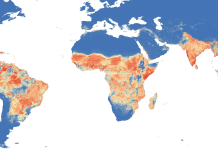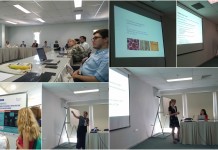Many people already have a professional and / or personal interest in exploring the use of data analytics technologies and tools; the next phase of this roadmap is to ensure that existing and future TDM practitioners have as much support as possible to overcome the barriers they face.
Phase II: Support Early Adopters
OBJECTIVE
Help and support those who are already interested in using and developing TDM tools and applications.
SITUATION
Many entrepreneurs, researchers, and indeed large companies are already pursuing TDM technologies of their own accord. The work of these practitioners is already beginning to demonstrate the value that TDM can create, which will be a key step in encouraging greater uptake of TDM technologies.
Assuming they have access to adequate datasets to work with, the Commission must do what it can to connect and support these early adopters of TDM, and reduce the barriers they face.
CHALLENGES
At the moment the uptake of TDM is fragmented across different sectors, businesses and fields, often limited to areas where early adopters have pushed for the use of TDM in their immediate personal areas of influence. Best practices are not shared across domains or sectors, hindering the advancement of TDM use.
Many others who are interested in adopting or using TDM technologies are unsure whom they can consult for advice or support. Without clear centralised sources of information, documentation, and expertise, the spread of awareness and use of TDM will remain limited to ad hoc personal networks.
Although funding exists for research into development of novel TDM techniques, many researchers report difficulty in accessing funding for the ‘less exciting’ aspects of the TDM value chain: Scaling of processes, storage and preservation of datasets, and security of access to data.
Many TDM practitioners have little to no understanding of relevant legal and licensing issues, or how to ensure that their activities are lawful with respect to intellectual property and Data Protection.12 Skills gaps also exist between experts in TDM technology, and experts in subject domains to which TDM may be applied; and between TDM skills used and taught in academia, and those required in an industrial setting.
PRINCIPLES
Support and encourage the creation of multi-stakeholder communication channels and platforms, and centralised sources of information about TDM.
Funders must provide for all stages of the TDM value chain, including activities which are not strictly novel research.
Encourage TDM practitioners to ‘satellite skills’ and awareness of issues such as relevant laws and regulations; facilitate collaborations to bridge skills gaps between TDM and subject experts, and between academia and industry.
ACTIVITIES
Communication channels connecting TDM practitioners should be highly visible and easily discoverable to anyone interested in using or applying TDM technologies. This will help foster exchanges of ideas and best practices around existing tools and their applications, bridging gaps between economic sectors and subject domains, and accelerating the benefits that can be derived from the use of TDM. It will also make it easier for new and potential TDM practitioners to discover support networks and communities to whom they can turn for support, reducing barriers to first-time TDM practitioners.
Existing and future projects around the use of TDM should be encouraged to participate in networks like Joinup to share and benefit from best practices.
To supplement the support networks discussed above, information about TDM resources and experts should be as easy to discover as possible. By ensuring everyone who is interested in TDM has access to relevant resources, training and experts, this again reduces barriers to adoption and use of TDM technologies.
In the best case this would be achieved through centralised national and international knowledge and resource portals. The FutureTDM and OpenMinTeD projects have made a start on aggregating knowledge and resources, but there is still much more that can be done to aggregate and disseminate resources and support for TDM practitioners.
Collaborations between academia and industry will help to align the skills that TDM practitioners learn and use in an academic research setting, and those most relevant to commercial and industrial applications. These opportunities for knowledge exchange will in turn make it easier to foster further public-private collaborations, accelerating the impact of TDM education and research.
Libraries often already undertake many research supporting activities, for example around data management, content sharing, and copyright compliance. These activities already involve connecting researchers to technical and legal experts where necessary. Libraries are therefore ideally placed to expand this role to also support TDM research activities.
Many of those involved in the research and application of TDM technologies are members of research universities. As multi-disciplinary institutions, universities are ideally placed to mediate sharing of knowledge and best practices across different subject domains. Universities should therefore be encouraged to actively develop strategic approaches to supporting TDM, in coordination with their libraries, by connecting existing and future TDM practitioners with each other and with relevant resources and experts in the university community.
Supporting novel research into TDM applications and tools is of course important, but proving that research outcomes can be translated into genuine, real-world applications requires funding for a host of related costs. Among other things these include integrating datasets from different sources; cleaning and homogenising datasets for analysis; building infrastructure to store, preserve and analyse data at scale; and developing and evaluating procedures to ensure compliance with Data Protection and other regulations.
Although these are not technically novel research activities, they must be recognised as crucial parts of research and development of TDM technologies, and provided for in funding for TDM research.
For more information see our Deliverable 5.4 Roadmap for increasing uptake of TDM






